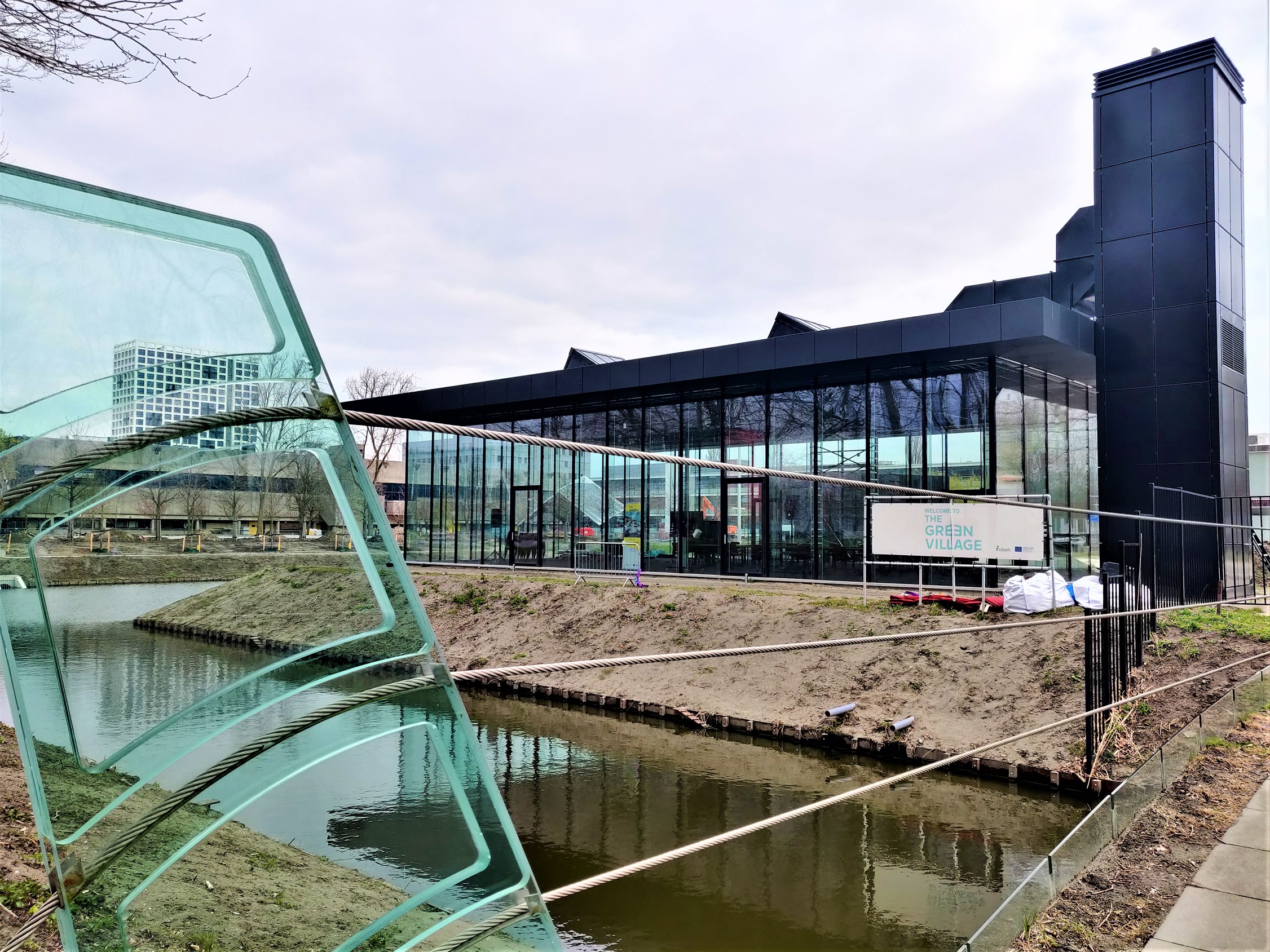In order to lower carbon emissions, Dr Phil Vardon wants to generate energy through pile foundations, using the natural temperature of the soil. How does this work?
The Co-Creation Centre at The Green Village gets its energy from the ground. (Photo: Marjolein van der Veldt)
Most heating and cooling is still powered by fossil fuels, but the Co-Creation Centre at The Green Village gets its energy from the ground. The building is kept warm or cool thanks to energy pile foundations.
Foundations
“Shallow geothermal energy has been used for quite a long time,” explains Dr Phil Vardon, one of the researchers involved. “But, our system is unique because the energy system is built into the foundations of the building.” According to Vardon the idea is relatively simple. There are pipes in the foundation piles that circulate fluid.
“If you want to heat the building you circulate a fluid that is cooler and it heats up as it goes through the ground. You then utilise that temperature difference to generate the energy needed to heat the building.”
This means that in summer, when a building is likely to be warm, you can use the same system for cooling. The process is then exactly the opposite. Vardon explains how it works. “You push in a fluid that is a bit warmer, and it cools down as it goes through the ground. By using a heat pump you can generate the cooling that you need.”
TU Delft TV visited Dr Phil Vardon at the Co-Creation Centre. Watch the short documentary below:
The unique thing about the energy piles at The Green Village is that they measure exactly what is happening in the ground. “The Netherlands has quite soft soils,” says Vardon, “and many of these systems have only been applied in firmer soils where there is no soil movement.”
As this is different in the Netherlands, it is really important for researchers to measure exactly what is happening. Do the piles move, is there a change in size as you increase or decrease the temperature, and does it affect the building? Vardon: “What happens is that changing size causes the foundations and the building to move just slightly. It’s very important that we make sure that this movement is within the parameters that the building can take, and that we don’t cause any structural problems.”
Impact
What Vardon likes most about this research is that it is very practical. “If these systems work well, they can be used in many residential buildings. And as the system is mostly CO2 free, it allows us to substantially lower our carbon emissions. So it will really have an impact on the world.”
TU Delft TV / TU Delft TV is a collaboration between Delta and the Science Centre. The crew consists of TU Delft students.



Comments are closed.